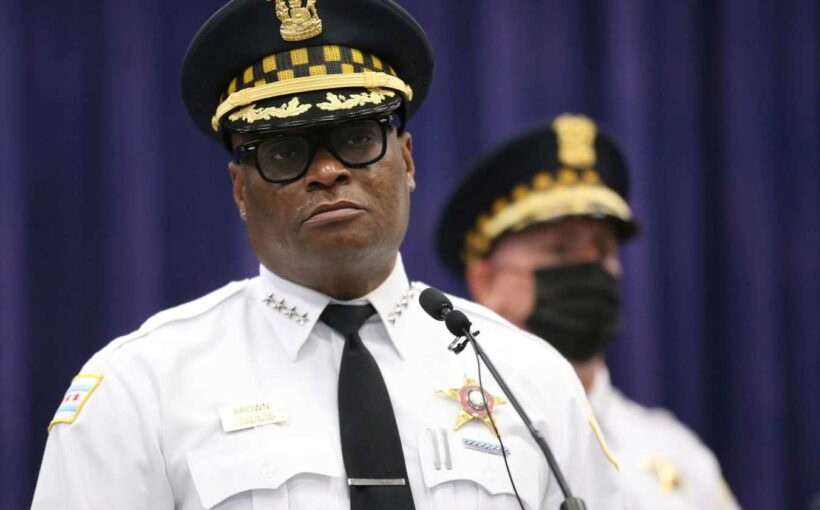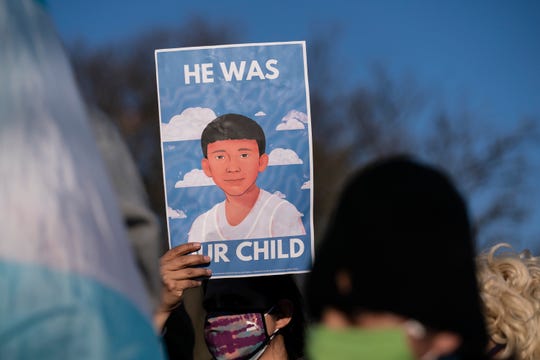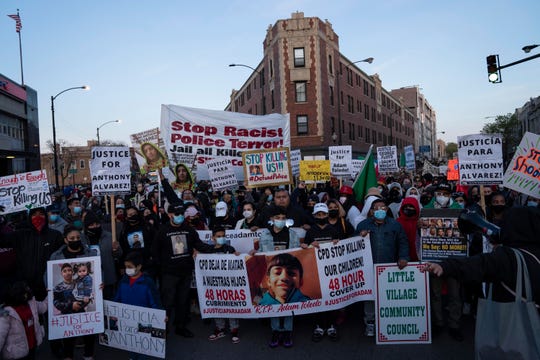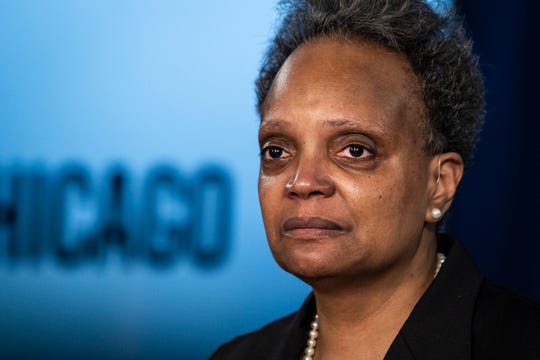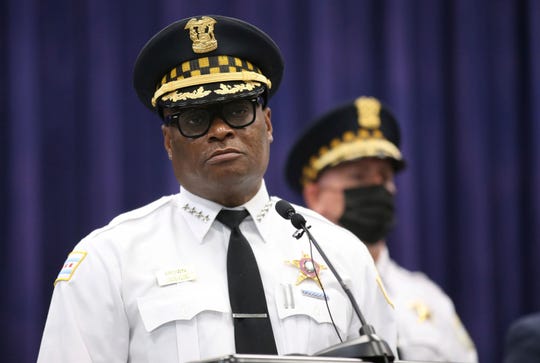Community members protest the the fatal shooting of 13-year-old Adam Toledo by a Chicago officer Friday April 15, 2021 in Chicago's Logan Square neighborhood. (Photo: Jessica Koscielniak, USA TODAY)
Chicago police are adopting a new foot chase policy, months after a pair of high-profile killings by officers in pursuit drew national attention and prompted protests in the city.
Thirteen-year-old Adam Toledo, who would have celebrated his 14th birthday Wednesday, was fatally shot in the early hours of March 29 after an officer chased him down an alley on the city’s West Side. Two days later, on the Northwest Side, Anthony Alvarez, 22, was running away from police with his back facing an officer who fired multiple times at him.
“Because foot pursuits are one of the most dangerous actions that police officers can engage in, we cannot afford to wait any longer to put a policy in place that regulates them,” Chicago Mayor Lori Lightfoot said in a statement Wednesday.
Adam Toledo would be 14 today: In his honor, his family is creating a sanctuary for at-risk youth in the Midwest
‘We failed Adam’: Body camera videos show 13-year-old Adam Toledo put hands up before fatal police shooting
Community members protest the the fatal shooting of 13-year-old Adam Toledo by a Chicago officer Friday April 15, 2021 in Chicago's Logan Square neighborhood. (Photo: Jessica Koscielniak)
Under the new policy, which goes into effect June 11, foot pursuits are “appropriate only when there is probable cause for an arrest or it is believed an individual has committed, is committing or is about to commit a crime.” The policy prohibits foot pursuits stemming from minor traffic offenses or for criminal offenses less than a Class A misdemeanor, “unless the person poses an obvious threat to the community or any person.”
Officers are directed to discontinue foot pursuits if someone is injured and requires immediate medical assistance, if officers are unaware of their location, if officers engaged in the pursuit believe they would not be able to control the suspect if a confrontation were to occur, and “if the need to apprehend the subject is not worth the risk to responding officers, the public or the subject,” according to the new policy.
The policy also outlines the responsibilities for supervisors, who are allowed to instruct officers to discontinue a foot pursuit at any time and requires officers to notify the city’s Office of Emergency Management and Communications of a foot pursuit.
Per the department’s body-worn camera rules, the policy “ensures” officers engaged in foot pursuits activate body-worn cameras to record the entire incident.
“The important parameters outlined in this policy will not only protect our officers, the public and potential suspects during foot pursuits, but it also serves as a step forward in our mission to modernize and reform our police department,” Lightfoot said.
Anthony Alvarez: Bodycam video shows Chicago police officer fatally shoot armed man who was running away
Evolution of a city’s account of a killing: How Chicago’s narrative changed in the fatal police shooting of Adam Toledo
Mayor Lori Lightfoot discusses the videos of 13-year-old Adam Toledo, who was fatally shot by a Chicago police officer, during a news conference at City Hall, Thursday, April 15, 2021. (Photo: Ashlee Rezin Garcia/Sun-Times, AP)
In the wake of the fatal shootings earlier this year, the city conducted internal focus groups to solicit feedback from officers on the policy. The police department will continue hosting those groups and soliciting community input as it continues to review and revise the regulations, and a finalized version is expected by September, police Superintendent David Brown said.
The department plans to hold a live virtual webinar on Tuesday to review the policy and answer general questions from the public. The policy will be available for public comment through July 15, according to the city, and residents can submit feedback through an anonymous public input form and two virtual citywide community conversations.
“The department will also facilitate community meetings throughout the city, as well as targeted discussions with community organizations and individuals who have direct experiences,” the mayor’s office said. “Community groups and organizations will also be invited to provide input on the policy through deliberative dialogues aimed at improving the policy from the perspective of Chicago’s residents.”
Before the new policy goes into effect, department members will have to complete a mandatory e-learning program that will familiarize them with the new guidelines.
Chicago police Superintendent David Brown speaks to media during a news conference at police headquarters, Wednesday, May 26, 2021, on the police department's new draft of a foot pursuit policy. (Photo: Antonio Perez, AP)
According to a 2016 Chicago Tribune investigation, foot chases played a role in more than a third of police shooting cases in the city from 2010 through 2015 that ended with someone wounded or killed.
Chicago’s Civilian Office of Police Accountability, the city’s civilian police oversight agency, was still investigating the fatal shootings of Toledo and Alvarez.
In mid-April, a group of Latino lawyers called for the Department of Justice to investigate the “circumstances that led to and resulted” in Adam’s death. In addition to new foot chase policies, the group also pushed for stronger policies regarding car chases, clearer training guidelines and more guidelines on police interactions with children.
Also Wednesday, the Toledo family announced the creation of Adam’s Place, a rural sanctuary for at-risk youth.
“A year ago, his family celebrated with pizza and cake,” Adeena Weiss Ortiz and Joel Hirschhorn, lawyers for the Toledo family, said in a statement. “This year, as they struggle with their grief, Adam’s parents and siblings are dedicating themselves to helping other families prevent the excruciating sorrow that comes from the loss of a child.”
Source: Read Full Article
